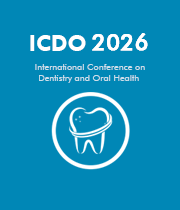Periodontium
The periodontium (or mucogingival complex) is a structural and functional unit within the oral cavity that is responsible for supporting the teeth and maintaining health of the periodontal tissues. It consists of four anatomical components: gingiva (gums), periodontal ligament, alveolar bone, and cementum. The gingiva covers and supports the alveolar bone and, together with the periodontal ligament, attaches around the root of the tooth and provides support for the tooth crown. It also helps to keep the tooth in its position in the jaw by forming a seal around its neck through the use of collagen fibers. This tight connection between the gingiva and periodontal ligament ensures that the forces exerted on the tooth are distributed throughout the periodontium. In addition, the gingiva is responsible for maintaining periodontal health. The periodontal ligament is a band of connective tissue that acts as a cushion between the root of the tooth and the alveolar bone. It allows the tooth to move slightly when biting or grinding food, and it also helps to protect the tooth against trauma or bruxism. The ligament consists of a dorsal and ventral portion, which are joined by Sharpey fibers. The dorsal portion of the ligament provides stability to the tooth, while the ventral portion functions to create a softer impact to facilitate easier biting and grinding. Cementum is a calcified, slightly compressible material that covers the root of the tooth and helps to keep it in place by forming a tight attachment with the periodontal ligament. The cementum on the surface of the root is impregnated with collagen fibers to form a tight seal around the root. Alveolar bone is the bony tissue that encases the teeth and helps to keep them in place. The alveolar process, which is the portion of the jaw that contains the teeth and their roots, is made of dense mineralized bone and is vital for proper tooth function. The bone is constantly remodeling itself in response to forces exerted on it by the opposing teeth, the periodontal ligament, and stimuli from the nerves. The periodontium is essential for providing support to the teeth and also helps to maintain the health of all the surrounding periodontal tissues.




Title : A systematic review on the early detection of oral cancer using artificial intelligence and electronic tongue technology
Maryam, Kardan Dental Clinic, Iran (Islamic Republic of)
Title : Cutaneous, Cranial, skeletal and dental defects in patients with Goltz syndrome
Ali Al Kaissi, National Ilizarov Medical Research Center for Traumatology and Orthopaedics, Russian Federation
Title : Artificial intelligence in clinical decision making in third molar surgery
Tannaz Pourlak, Tabriz University of Medical Sciences, Iran (Islamic Republic of)
Title : The role of vitamins and nutritional supplements in temporomandibular joint disorders (TMDs) among Yemeni population
Muharrm Abdo Bazza Othman, Yemen Dental Association, Yemen
Title : The nature and management of dental erosion in patients with bulimia nervosa
Maya Fahy, The Royal Victoria, School of Dentistry, United Kingdom
Title : Evaluating hygienist follow up for head and neck oncology patients in secondary care: Results from a two cycle audit
Peter Basta, Newcastle Dental Hospital, United Kingdom